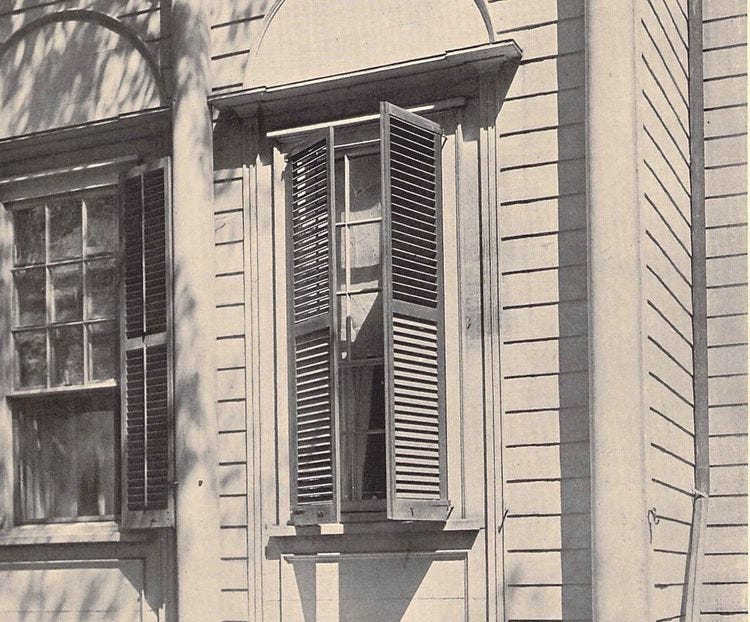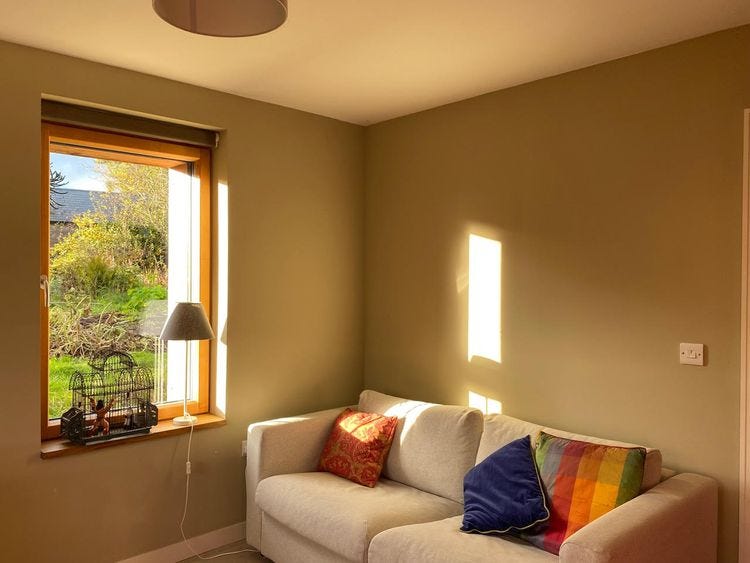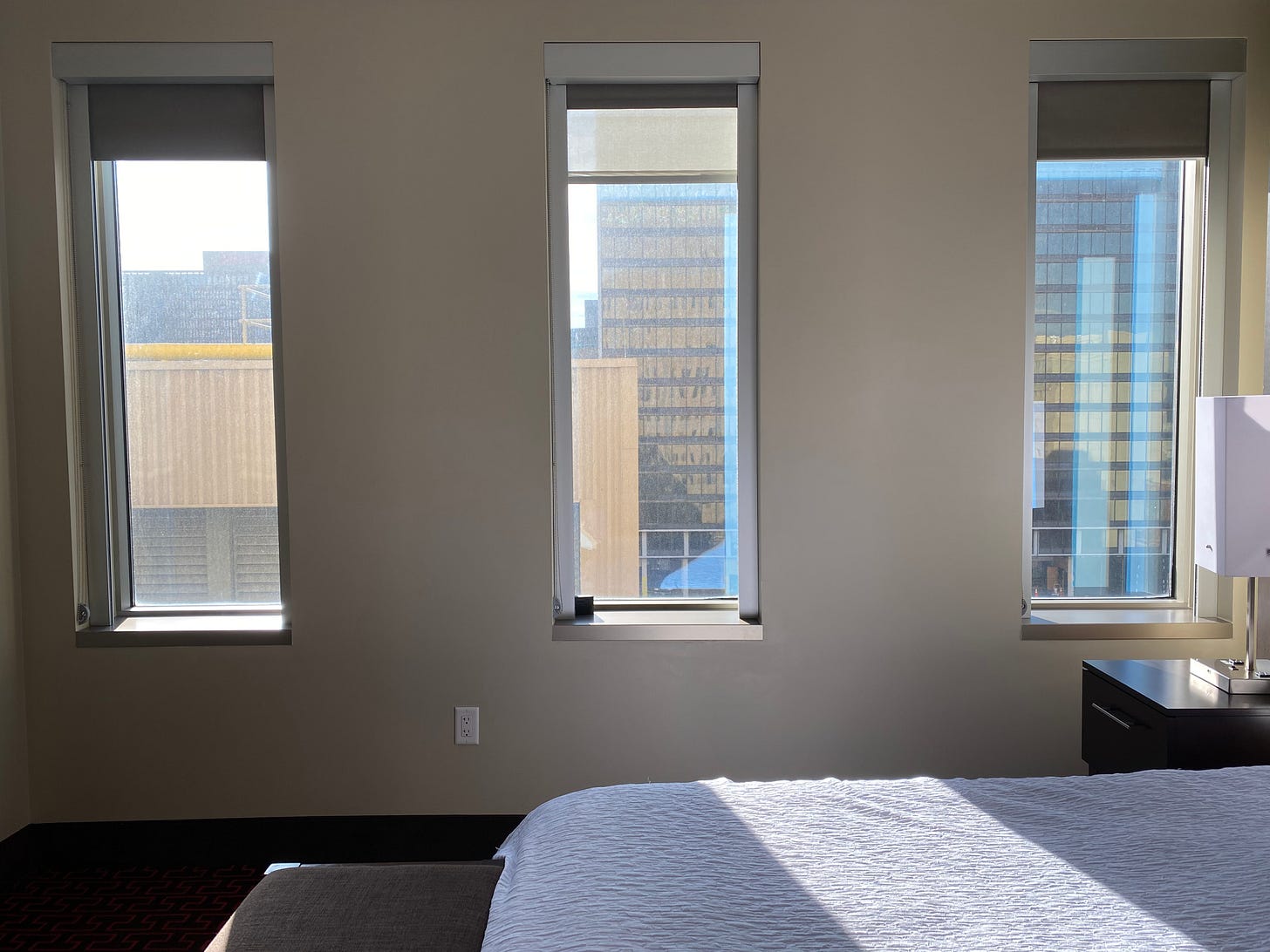Why we need “windows with purpose”
As the world heats up, we have to rethink how we design them, especially in multi family dwellings.
200 years ago, windows were a hard-working, carefully thought out piece of climate control. They were often double-hung so that they could be tuned to maximize ventilation. They had shutters for security and privacy while still maintaining ventilation. There might be a sheer drape inside to cut glare, and heavy drapes for keeping in the heat in winter. They were tall to let light deep into the room. But they didn’t come down too close to the floor; glass was expensive and you didn’t make the window any bigger than it had to be.
Much has changed in 200 years. Today, we have artificial light and mechanical ventilation, and windows are often treated as decorative elements in a facade, designed from the outside according to how they look rather than how they work. Speaking at the Passive House Network Conference in Denver, Passive House expert Monte Paulsen says instead, we should be designing “windows with purpose”-
“Over-glazing brings high heat loss, overheating, storm damage, and costs more. Only place a window where it has a specific purpose and where it is the best solution to serve that purpose. Common purposes: light, view, ventilation.”
Note that heating is not on that list; solar heat gain used to be a desirable function for windows. But the climate is changing, and now we worry about keeping cool, not just for comfort but so that we don’t die. That’s why Paulsen says “every multi family building requires external shading as well as mechanical cooling to remain habitable in the coming decade.”
“Why? Multi family buildings are more dense than single-family dwellings. More people means more cooking, more showers, and more appliances, all of which add up to more internal heat gains.”
Exterior shades and shutters are common in Europe, where people would leave them open at night to flush out the interior air and close them in the daytime. (See Mike Eliason’s article in Treehugger) Paulsen says they improve comfort in much of the year and lower the annual cooling demand, as well as protecting the windows in our more common storms. But it is no longer enough; “when the outdoor temperature remains above 80°F through the night, no amount of shading or night flush will cool the building.”
Other studies have confirmed this, including the paper Improving the passive survivability of residential buildings during extreme heat events in the Pacific Northwest which found that shading keeps you cooler if you don't have air conditioning and significantly reduces the AC loads when you do. From the study:
“Air conditioning alone is neither a desirable nor an effective solution: operation requires electricity, which is regularly compromised during heat waves by sagging power lines and extreme demand peaks; additionally, operational efficiency is diminished and unit capacities are often exceeded during heat waves; equipment purchase and maintenance needs create vulnerability to limited funding; and the hot air expelled exacerbates urban heat island effects.”
As an aside, this is why I get so cranky with the “Fist pumps for heat pumps” crowd. They are not a panacea; in summer, they are air conditioners. We have to minimize the cooling load and the size of the units, and get them small enough so that they can run on better refrigerants. That means less heat gain through walls and windows.
So here we are in the 21st century and we want smaller windows to reduce heat gain, we have mechanical ventilation running much of the time, shutters blocking the view some of the time, we have LED lighting that probably delivers light at greater efficiency than a window; what function are they actually serving? How should we be designing them? Engineer Nick Grant has written that “windows should have size and position [that] are dictated by views and daylight rather than energy gain or loss.” When I suggested to him that perhaps windows aren’t necessary at all, he told me: “Despite my banging on about efficiency and sufficiency, I’m partial to the odd window placed for a Zen view or mid-winter sunbeam that does nothing for heating or daylight but lifts the spirits."
Grant sent me a photo and noted:
"Slate Cottage by Charles Grylls and built by Mike Whitfield had a lot of thought put into window placement and I think it works great. Budget was small but design aspirations high so every window had to work for its keep."
A wonderful Swedish study noted that “Windows, transparent in both directions, enable the environmental conditions (social connection) to support the basic need for relatedness. Perceiving a room to be adequately daylit, pleasant and spacious seems to be equally essential, and a view of the world outside brings information to inhabitants.”
But you can have too much of a good thing. Nick Grant is correct; windows have to work for their keep. They shouldn’t be any larger than they have to be to frame a view, though the architect then has to work really hard to earn her keep as well; this requires some skill.
I am writing this post from a Denver office building to hotel conversion, with weird narrow windows and a truly shit view of parking lots, but the sun streaming in makes all the difference and lifts my spirits. The Turkish playwright Mehmet Murat Ildan wrote, “Your desire to be near to window is your desire to be close to life!” They are wonderful things that should be in every habitable room. But as Monte Paulsen notes: keep them small, keep them simple, and keep them shaded.
I wrote a post about this earlier this year on Green Building Advisor: Rethinking Window Size. Conclusion:
Windows are complex, multifunctional, carbon-intensive, expensive, difficult to get right, and too often they are designed primarily for aesthetics. I concur with the findings of professors Richardson and Coley: We must change how we look at the aesthetics of buildings and “drive a revolution in what architects currently consider acceptable for how houses should look and feel. That’s a tall order, but de-carbonizing each component of society will take nothing short of a revolution.”






I came here because of Laura Fenton’s rec! Fantastic read! I love that there have been thoughtful studies and experts who put into words what I’ve been feeling for quite some time -- windows connect your home to the world around you. The view, the “information” received, the relation to what’s outside those walls. Really cool idea.
Also, small note, I smiled at your use of “her” in “the architect then has to work really hard to earn her keep.” Small changes like normalization this make me happy. Thank you!
I am so glad you included the photo inside your hotel room Lloyd - typically if you pay more you get a “better view”. The same applies to homes. Those that pay more for a “better view” will also be using more UPFRONT CARBON...